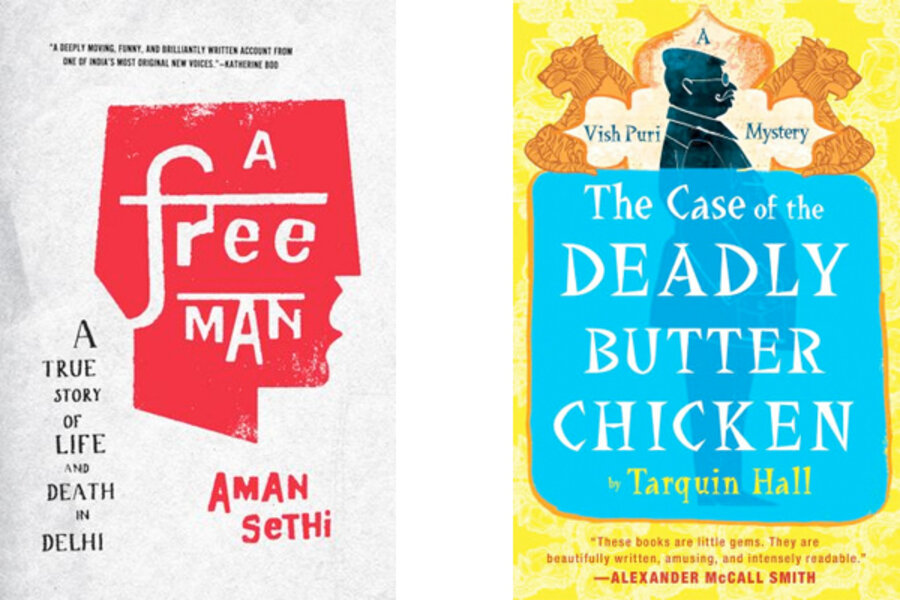Tales of two Delhis
Loading...
Delhi – India’s capital, teeming with 16.7 million inhabitants – is the eighth largest city in the world. Founded during or before the 6th century BC and raided, ransacked, and rebuilt multiple times since, Delhi has the kind of history that could give a reader vertigo.
But for those eager for a slice of the contemporary city, there are less overwhelming stories to be enjoyed. One of those, A Free Man: A True Story of Life and Death in Delhi, is an original piece of reportage that somehow manages to be as raw and disturbing as it is wryly humorous and poignant.
Hoping to delve into the lives of Delhi’s shadowy multitude of day laborers, Indian journalist Aman Sethi befriended one of them – Mohammed Ashraf, a “slight ... dark man with salt-and-pepper hair ... a clipped moustache and reddish eyes.”
Sethi is a writer of considerable skill. With economy and seemingly effortless control of numerous shifts in tone, he takes us into the heart of Ashraf’s world.
Ashraf waits daily for work in Bara Tooti, a labor market in Old Delhi. Or, that is, he waits there on the days when he has no money for gin. When he has enough money for a drink, he often prefers a bender.
One way or another, Ashraf and his confederates eke out fragile livings. They dodge traffic, mingle with drug dealers, evade the police (who are empowered to hand out stiff jail sentences for begging), and do their banking with the man who runs the tea shop. One young acquaintance sells his own kidney when things get bad enough.
But Ashraf has not always lived so. If the stories he tells Sethi are entirely to be believed (and Sethi himself admits he isn’t always sure), then Ashraf has worked as a butcher, a tailor, a floor polisher, an electrician’s assistant, and once upon a time he studied biology in college.
Ashraf – a dodgy personality whose story nonetheless evokes considerable tenderness – has made more than his share of mistakes. But Ashraf, when asked, is more inclined to blame his problems on Delhi itself, a city that might look to some like “a glistening metropolis of a rising Asian superpower” but to him and his fellow laborers more often feels like “a city of the exhausted, distressed, and restless.”
At the other end of the reading spectrum is The Case of the Deadly Butter Chicken, the third of the Vish Puri mysteries by English journalist and Delhi resident Tarquin Hall.
In Punjabi detective Vish Puri Hall has created a cross between Hercule Poirot and Rumpole of the Bailey and planted him firmly in a faux Spanish villa in middle-class Delhi. Like Poirot, Puri is a proud man with a lustrous mustache and fairly open disdain for lesser beings, which, to his way of thinking, include nouveau riche “Delhi hillbillies,” readers of Agatha Christie novels, and anyone or anything from Pakistan.
More like Rumpole, however, Puri lives in fear and awe of a strong female personality. Much of “The Case of the Deadly Butter Chicken” – which pits Puri against cricket match-fixers and a mysterious thief who purloins mustaches – involves Puri scurrying about his beloved city surreptitiously seeking out the delicious and highly caloric dishes (recipes included) that his formidable wife, Rumpi, seems intent on denying him.
Puri’s beloved Mummy-ji also plays a starring role in this novel as she helps her son solve his case (and turns out to have a secret past of her own). Mummy-ji also dials up the traditional Anglo-Indian flavor of the story, sprinkling her conversation with sentences like, “Do positivity, Chubby. Today I’m feeling very much lucky.”
Hall does an excellent job of conveying the bustle and glitz of modern Delhi and providing readers with a gently humorous take on life in contemporary India. If “Masterpiece Mystery!” is not currently scouting locations in Delhi, I’d have to say that they are missing a major opportunity.
Marjorie Kehe is the Monitor’s books editor.






